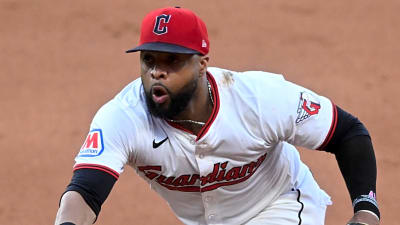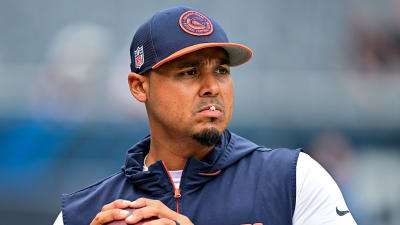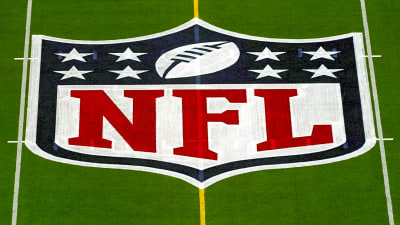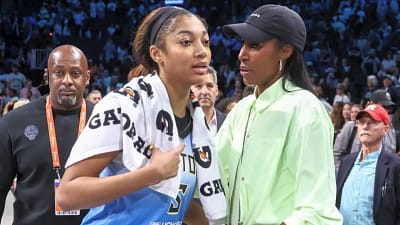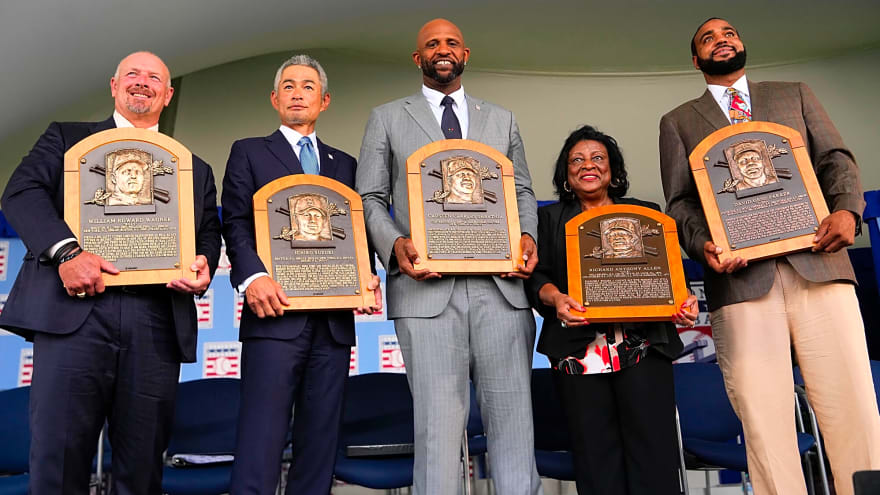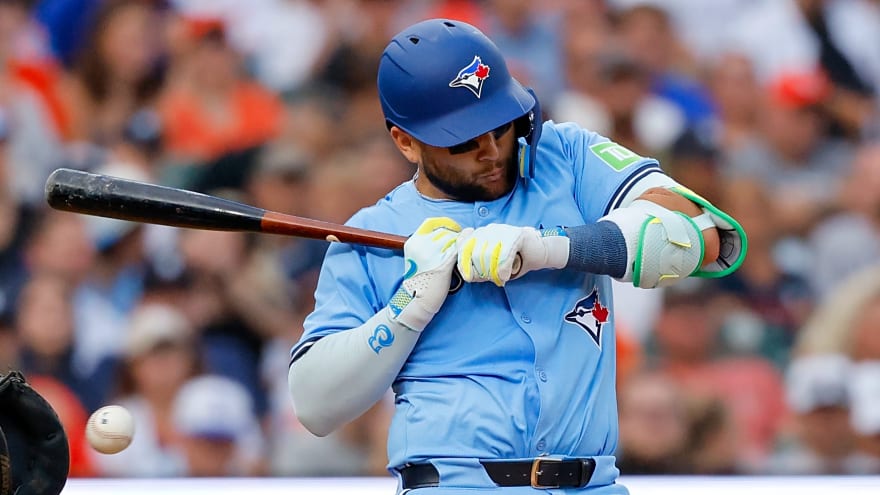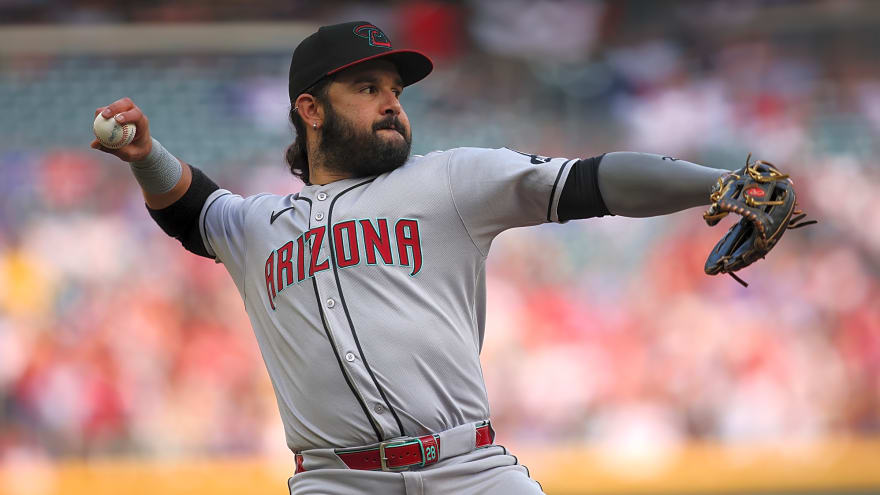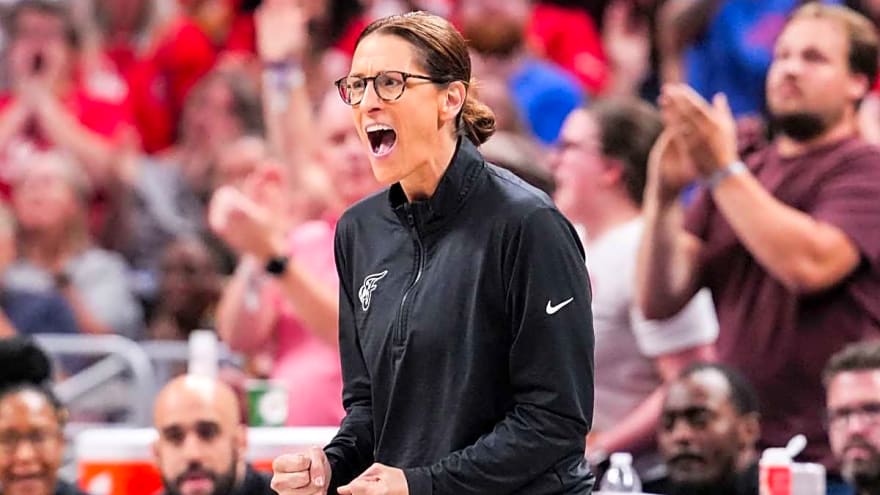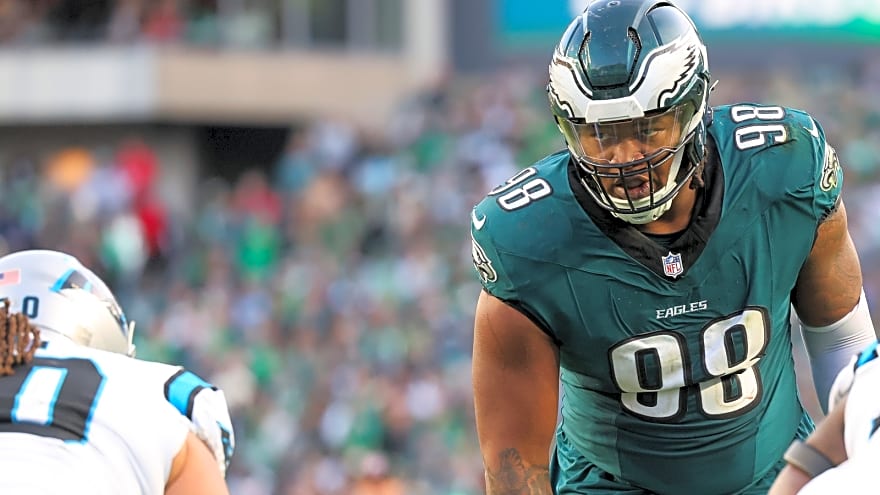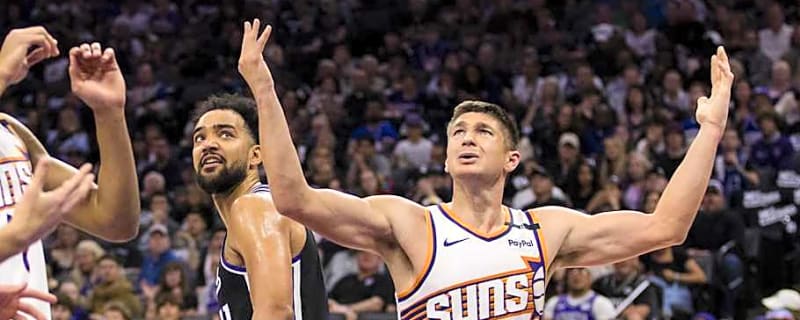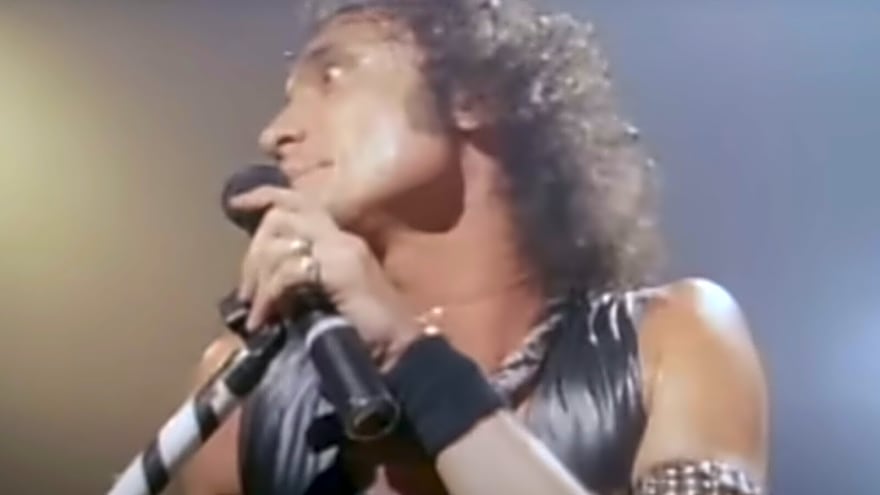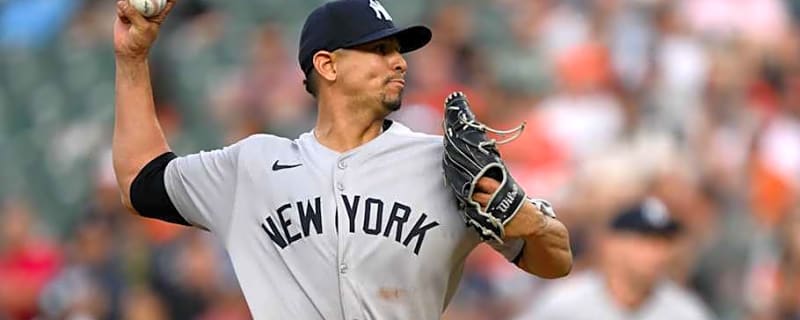
The Pittsburgh Pirates have swung their second trade of the day, acquiring left-handed relief pitcher Jalen Beeks from the Colorado Rockies.
In return, the Pirates are sending left-handed pitching prospect Luis Peralta, who had been with Double-A Altoona. The deal has been announced by the Pirates and is official.
Beeks, 31, has made 45 appearances with the Rockies this season. He’s gone 6-4 with a 4.74 ERA and nine saves and has struck out 38 batters against 18 walks in 49.1 innings pitched. The left-hander has excelled at inducing soft contact this season and has generated groundballs a healthy 44.8% of the time. He’s limited left-handed hitters to a .182 batting average
Typically, pitchers have struggled in the hitter-friendly Coors Field, but Beeks has performed better at home this season than on the road. He has a 3.81 ERA when pitching at home this season and a 6.00 ERA on the road.
In six career seasons in the big leagues between the Rockies, Boston Red Sox and Tampa Bay Rays, Beeks has gone 22-15 with a 4.43 ERA across 176 appearances/19 starts. His best season came in 2022 while with the Rays, when he posted a 2.80 ERA with 70 strikeouts in 61 innings pitched.
Beeks is in the final year of his contract and will be a free agent after the season.
The Pirates had a need for another left-hander in their bullpen alongside flamethrower Aroldis Chapman. Josh Fleming elected free agency after being designated for assignment on Friday and Ryan Borucki recently had his rehab assignment paused.
Peralta totaled 26 appearances in the minor leagues this season between High-A Greensboro and Altoona. Combined between the two levels, the 23-year-old went a perfect 4-0 with a miniscule 0.91 ERA and 64 strikeouts in 39.2 innings pitched.
In six seasons in the Pirates’ organization, Peralta went 9-19 with a 4.20 ERA in 110 appearances/44 starts and averaged 12 strikeouts per nine innings. The Pirates originally signed him as an amateur free agent out of the Dominican Republic.
Earlier in the day on Monday, the Pirates traded right-handed pitcher Quinn Priester to the Boston Red Sox for infield prospect Nick Yorke.
The MLB trade deadline is Tuesday at 6 p.m. ET.
More must-reads:
- Guardians POBO opens up about Emmanuel Clase investigation, what comes next
- Three-time All-Star placed on administrative leave amid MLB's betting investigation
- The 'MLB mascot names' quiz
Breaking News
Trending News
TODAY'S BEST

Phillies star confronted MLB commissioner in team clubhouse
Throughout the season, MLB Commissioner Rob Manfred visits all 30 team clubhouses in an attempt to strengthen his relationship with the players. But when Manfred visited the Philadelphia Phillies last week, he did anything but strengthen his relations, at least not with Phillies star Bryce Harper. As reported by ESPN's Jeff Passan, Harper wasn't a fan of a conversation that seemed to be heading toward the possibility of implementing a salary cap in the game. Harper stood nose to nose with Manfred, telling him, "If you want to speak about that, you can get the [expletive] out of our clubhouse." Passan's report says that Manfred reportedly responded that he was "not going to get the [expletive] out of here." Manfred's main source of argument comes from his view that it's an important issue to discuss and has a direct impact on the game of baseball. Nick Castellanos, who's been known to have a fiery side of personality himself, helped to mediate the situation by saying, "I have more questions" to Manfred. Because the meeting continued, things settled down, and eventually, Manfred and Harper shook hands. Though Harper did not answer phone calls from Manfred the next day. "It was pretty intense, definitely passionate. Both of 'em. The commissioner giving it back to Bryce and Bryce giving it back to the commissioner. That's Harp. He's been doing this since he was 15-years-old," Castellanos told ESPN. Both Harper and Manfred declined to comment to ESPN on the matter. Manfred is certainly in a difficult spot with players themselves against a salary cap, as well as the MLB Players Association, which is adamantly against it. But some team owners are for it, most notably Baltimore Orioles owner David Rubenstein, who purchased the club in August 2024. It's certainly worth noting that the 1994 players' strike was a result of the league's effort to move to a salary-cap system. That is the worst-case scenario for MLB. And it seems to stress out Manfred. "Rob seems to be in a pretty desperate place on how important it is to get this salary cap," Castellanos added in his comments to ESPN, "because he's floating the word lockout two years in advance of our collective bargaining agreement [expiration]. That's nothing to throw around. That's the same thing as me in a marriage saying, 'I think divorce is a possibility. It's probably going to happen.' You don't just say those things." It's also important to note that Harper is a client of baseball super agent Scott Boras, and Castellanos is a former Boras client who now represents himself. Boras is known for bargaining for a ton of money for his clients, so that may provide one explanation of many for why Harper would be so against the discussion. It seems the only thing all parties can agree on is that no one wants a work stoppage in Major League Baseball. But that might just be where the agreements end.
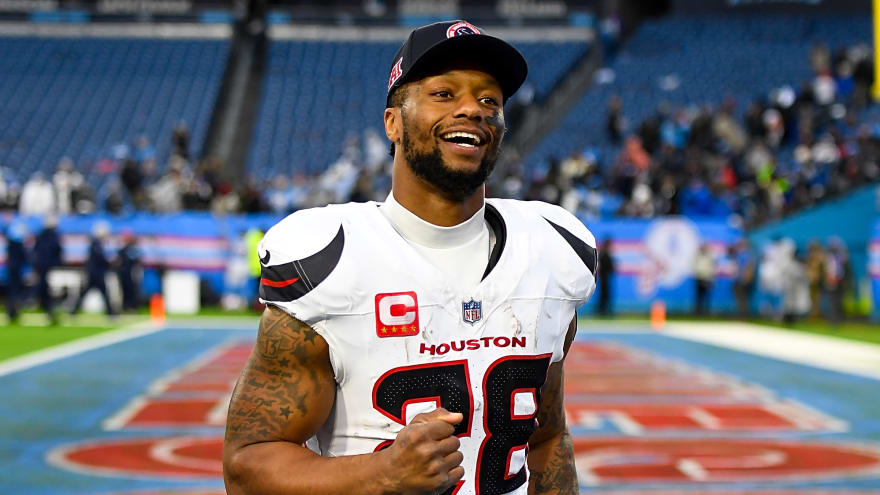
10 Overvalued/Undervalued players in fantasy football entering training camp
When prepping for a fantasy draft, you need to anticipate how the board will shift by the time your draft arrives—and what that means for your strategy. Here are 10 players I believe are currently overvalued or undervalued heading into training camp, along with where I expect their value to settle. Some players are going to see a major shift in ADP by late August for obvious reasons, such as QuinShon Judkins, so I focused on players who have a path to maintaining their overvalued or undervalued status until late August, when most fantasy drafts take place. Note: ADP is FantasyPros Consensus Half-PPR. Adjusted Line Yards are via FTN Fantasy. All other data via PFF unless otherwise noted. Use promo code YARD20 for $20 off your FantasyLabs fantasy football subscription! Overvalued RB Joe Mixon, Texans (ADP: RB19) When a running back declines in fantasy value, it's usually due to some combination of: (a) age/wear (b) injury (c) offensive line (d) role/job security. In Mixon’s case, it’s all the above. Age/Wear: Mixon is entering his age-29 season—two years past the typical RB peak at 27. Per Stathead, no player has more combined regular-season and playoff touches over the past four seasons than Mixon (1,372). Injury: Mixon begins training camp on the Non-Football Injury (NFI) list with an ankle issue that sidelined him for all of OTAs and minicamp. While he may be ready for Week 1, this is concerning given his age, workload, and position. Offensive Line: Houston’s run-blocking unit ranked just 15th in PFF grade and 24th in Adjusted Line Yards last year—and could regress after trading away Laremy Tunsil, who earned an 89.1 PFF run-blocking grade (fourth among tackles). The Texans could have up to five new starters and are implementing a new blocking scheme under OC Nick Caley. Whether due to Mixon’s injury or unsettled roles, chemistry with the line may be lacking—bad news for a back who's averaged 4.1 YPC or worse in six straight seasons, including just 3.4 YPC over his final eight games of 2024. Role/Job Security: Mixon has long been pulled on third downs, a trend likely to continue after the Texans drafted Woody Marks to compete with Dare Ogunbowale for that role. Early-down work may also be at risk with the arrival of Nick Chubb. Mixon's ADP has started to slip in Best Ball following the injury news, but given that he was still being drafted well inside the top 20 in Best Ball after Chubb was acquired, I wouldn't be surprised to see his stock see an artificial bump back to previous levels if he’s removed from the NFI list before the end of camp. RB David Montgomery (ADP: RB22) Montgomery hasn’t taken a preseason snap as a Lion and isn’t injured—so his red flags may not surface until the regular season. Age/Wear: He turned 28 in June, entering his first year past the typical RB peak. He showed signs of decline in 2024, failing to produce a run longer than 21 yards on 185 carries. Offensive Line: Montgomery averaged a career-low 1.07 yards before contact per carry last season, despite running behind a Lions line that ranked No. 1 in Adjusted Line Yards (5.08). That unit could regress significantly in 2025 after losing top interior linemen Kevin Zeitler and Frank Ragnow. Role/Job Security: Montgomery has maintained RB2 value as the Lions primary early-down and goal-line back despite splitting time with Jahmyr Gibbs. But after Gibbs rushed for 1,412 yards and led the NFL with 16 rushing TDs, it's difficult to justify Montgomery as the primary anything. In a worst-case scenario, Gibbs may simply be too good to keep off the field, and Montgomery gets 2019 Dion Lewis-ed. Turnover on the offensive coaching staff following the departures of Ben Johnson and Tanner Engstrand creates more uncertainty. A tougher 2025 schedule also means fewer favorable game scripts and touchdown chances than during last year’s 14-3 showing (12-2 with Montgomery active). Montgomery's re-draft overall ADP is in the 50s, but I think his true value is more in line with his Best-Ball ADP, which is in the 70s. If TD regression hits, Montgomery starts to look like the other early-down 1b types, such as Jordan Mason or (pre-eye-injury?) Najee Harris, who go in the 90s and 100s overall, respectively. Dominate your Best Ball and season-long fantasy football leagues with FantasyLabs’ brand-new app that's available in the Apple App Store and on Android! WR Cooper Kupp (ADP: WR41) Kupp hasn’t played in a preseason game since 2017, so his re-draft ADP may remain relatively static based on reputation alone. While WR41 seems reasonable at first glance—he finished WR43 in PPR and WR44 in half-PPR from Weeks 12–17—those numbers came in a Sean McVay offense with Matthew Stafford at quarterback. Now he’s in a Klint Kubiak system quarterbacked by Sam Darnold. It's concerning that Kupp got worse the more he played, to the point McVay and Stafford could barely work him into the offense at all, and then unceremoniously dumped him for another only to throw dollars at another WR on the wrong side of 30 in Davante Adams. The Rams are the same team that was late to the party on Allen Robinson and DeSean Jackson and just beat last call on Odell Beckham Jr. -- if they think you're cooked, you're probably cooked. According to Matt Harmon's Reception Perception, Kupp posted career-low 3rd percentile scores against man and press coverage and a 30th percentile mark against zone despite getting a free release off the line of scrimmage 86% of the time. Without McVay, Stafford, and most of his explosiveness and separation ability at age 32, Kupp profiles as a low-ceiling, low-touchdown possession receiver who now comes with volume concerns. Nearly every WR ranked in the top 55 arguably has more upside—and most have higher floors as well. TE Evan Engram (ADP TE8) Engram has all the makings of a better addition in real life than in fantasy. The first red flag is that the Broncos used a three-way committee at tight end last season. Pass-catching specialist Lucas Krull led the way with a 44% route rate, but Adam Trautman (29%) and Nate Adkins (20%) still combined to run a route on nearly half of the team’s dropbacks. I’m not saying Engram will be anywhere near Krull territory, but what I am saying is Sean Payton has a sick, sick fetish of subbing in 3-4 new skill guys before every play. In all seriousness, Engram will turn 31 in September and has never been a great blocker, so he will likely come off the field more than other starting tight ends, especially those being drafted at his ADP range. In fact, Payton in March may have already alluded to more of a situational role than expected for Engram, mentioning third downs and the red zone when discussing where Engram would help. The red zone comment should raise eyebrows, because Engram hasn’t caught more than four TDs in a season since catching six in his 2017 rookie campaign. At 6-foot-3, Engram is shorter than average for a TE, and he will be flanked by one of the tallest WR units in the NFL: Courtland Sutton is 6-foot-4, Troy Franklin and Pat Bryant are 6-foot-3, and DeVaughn Vele, should he make the team, is 6-foot-5. Engram was added in March to give Payton his long-sought-after “Joker,” but they’ve since added another potential Joker option in RB RJ Harvey in Round 2. Drafting a potential starting WR in Bryant in Round 3 could also free up Marvin Mims Jr. from some of his traditional WR duties and allow him to play more of the Joker role as well. Engram was a great get for a team that previously had “Lucas Krull” cosplaying as a lead tight end. That said, he finds himself in an offense that also upgraded at every other skill position and seems intent to spread the ball around to a suddenly crowded group of potential Joker options and big-bodied pass catchers. I have Engram at TE12. With no assurances that Engram will continue to be a volume guy, I can’t justify the opportunity cost of passing up a WR or RB in his range. Undervalued RB Bhayshul Tuten (ADP: RB46) Tuten still goes in the mid-40s RB range behind Travis Etienne (RB37) and in the same range as Tank Bigsby (RB44), but the rookie could easily emerge as Jacksonville’s top runner before camp is all said and done, in which case he would close with an ADP higher than Etienne’s currently. Even if uncertainty remains about usage, Tuten’s 4.27 speed makes him the type of player who could send his value surging with one snap. Given the team’s limited draft capital after trading up for Travis Hunter and new head coach Liam Coen’s track record of rookie usage as Tampa Bay’s offensive coordinator last season – Day 3 pick Bucky Irving was a double-digit touch guy right off the bat, and Jalen McMillan an 80% snap guy – it’s difficult to envision him starting the season as any worse than the RB2. If comparing this year’s Jags backfield to last season's Bucs backfield, Etienne is Rachaad White, Tuten is Bucky Irving, and Bigsby is Sean Tucker, though there is still a chance Etienne or Bigsby gets moved. The longer both Etienne and Bigsby both remain on the roster, the more likely it is that Tuten's ADP stays depressed until draft season. If one is moved, his ADP will potentially skyrocket into the 20s, but it would be deserved given the question marks in this year's Frozen Pond Tier. RB Dylan Sampson (ADP: RB57) With second-round pick QuinShon Judkins still unsigned amid legal issues that have put his early season availability in doubt, Jerome Ford is the favorite to open the season as the Browns RB1 (and could be undervalued in his own right as RB49), but Sampson is the higher-upside option, especially at ADP. While Ford is a known quantity who the Browns have given every indication they see as more of a role player than a true workhorse, Sampson is a better bet to assume a role similar to that initially expected for Judkins. Sampson is also a threat to overtake Ford prior to Judkins’ return even if Ford opens the year as the RB1, so I’d have less interest in Ford as a bench stash/rental if he were named the Week 1 starter. It’s also possible that Judkins ends up missing so much time that he never earns a meaningful role, in which case Sampson could post the full-season RB2 value that Judkins was expected to produce. Sampson enters camp behind Ford and Pierre Strong Jr. which could actually work in his favor, as it could delay Sampson's potential ascension just enough to limit the time his ADP has the chance to catch up before draft season. WR Stefon Diggs, NE (ADP: WR41) If I’m betting on a 30-plus WR as a high-upside WR4, I'm going to bet that the guy hanging out with Cardi B and pink contraband is the one with more young blood left in him. While Diggs has an obvious downside coming off a torn ACL, he has been fully cleared for camp and was still an effective coverage-beater and viable perimeter receiver the last time we saw him on the field, which can’t be said for Cooper Kupp. In Matt Harmon’s Reception Perception charting, Diggs posted 67th percentile success rates against both man and press coverage and a 51st percentile success rate against zone coverage while with a near-50/50 split between the slot and out wide. (Kupp, as mentioned previously, charted near the bottom of the league versus all coverages.) Unlike Kupp, Diggs was signed to be his team's No. 1 receiver. Given the drop-off from Diggs to New England's other pass catchers, he could be an absolute target monster and still get home on pure volume at his current ADP. It’s not quite the same situation, but it’s worth noting that Davante Adams in 2022 saw a career-high 180 targets at age 30 in his first year in a Josh McDaniels offense. WR Jayden Reed (ADP: WR44) There is a chance Reed’s ADP becomes more bearish due to reports of him continuing to sit out 2WR sets, but that’s always been his role, and he’s produced back-to-back top-30 seasons to start his career. While I’m high on Matthew Golden, I think Reed benefits from Golden’s arrival because Golden (plus a healthy Jordan Love) should restore Matt LaFleur confidence in dialing up more passing plays after Love dipped from 34.2 attempts per game in 2023 to 28.3 last season. Love quietly posted top-five marks in yards per attempt (8.0) and QBR (69.3) last season, so I’m not expecting LaFleur to have any hang-ups in regard to passing volume this season. After posting top-25 finishes in 9 of 16 (56.3%) games as a rookie on 5.9 targets per game, Reed saw his receiving volume dip along with the rest of the team, posting a top-25 finish in only 6 of 17 games on 4.4 targets per game. However, a large chunk of Reed’s underperformance came in two games Love missed and two others in which he was knocked out early. In Jordan Love’s 13 healthy starts, Reed finished as a top-25 WR at a 46.2% clip, a top-36 WR at a 61.5% clip, and a top-41 WR at a 76.9% clip on a modest 4.8 targets per game. Reed’s stellar underlying metrics in each of his first two seasons – 2.05 yards per route run (22nd among WRs) in 2023, 2.20 (17th) in 2024 – coupled with a likely increase in passing volume for one of the most efficient passers in the league make Reed a high-upside, low-risk proposition at ADP, regardless of whether or not Golden breaks out in Year 1. WR Matthew Golden (ADP: WR46) Golden’s ADP will likely creep up as reports have come out of camp that Golden started alongside Romeo Doubs in 2WR sets. In that setup, Golden would be the favorite for targets, as rookie first-round WRs have averaged 19.8% targets per route over the past 10 seasons, which eclipses the career rates of Doubs (19.2%), RB Josh Jacobs (18.9%), TE Tucker Kraft (14.0%), and TE Luke Musgrave (14.0%). When the Packers go three-wide, Golden would still be the best bet to be the No. 2 target behind Jayden Reed (21.3%). The Packers never seemed intent on making D'Ontavion Wicks anything more than a rotational WR4 when Christian Watson was healthy, but as per usual, Watson (ACL) is not healthy, and Golden is a player they deemed worth more draft capital than Watson and every other WR on their roster. Golden was initially thought to be in a crowded WR depth chart, but if he continues to run as a starter in 2 WR sets, he’d likely be the favorite to edge Reed for the team lead in targets overall. Jordan Love finished fifth in YPA (8.0) and sixth in TD rate (5.9%) in an injury-marred season and sits at 7.5 YPA and a 5.5% TD rate for his career. He shouldn't have his entire WR corps going outside the top 40. Golden's ADP is more likely to overcorrect if he breaks a big play in preseason, but I'd still want him anywhere I can get him as my WR4. TE Colston Loveland (ADP: TE13) Loveland’s ADP became depressed with news of him undergoing offseason shoulder surgery in January, but he was cleared just before camp. Given that Loveland was drafted over Tyler Warren, it’s clear that new head coach Ben Johnson was in search of a full-time tight end. When the Lions drafted Sam LaPorta 34th overall in 2023, Johnson utilized him on 83% of offensive snaps in Year 1, and he went on to post a then-rookie-record 86 receptions for 889 yards and 10 TDs. The fact that Johnson spent the 10th overall pick on Loveland with Cole Kmet already on the roster signals that Kmet is viewed as nothing more than Johnson’s version of Brock Wright, and that there probably was something to Caleb Williams hitting the mute button on Kmet to the tune of just eight of 195 routes over the final six weeks of the season. Kmet is likely a bigger threat to fellow rookie Luther Burden III at slot receiver in the form of more 2TE sets. Loveland has top-three overall upside as a rookie. Given the question marks in the ba

Oilers to Acquire a Top-Tier Goalie. An Official Trade Offer Is on the Table in a Blockbuster Deal
The Boston Bruins have been under pressure to retool after a disappointing season, and now a potential blockbuster move could shake the entire NHL. A major trade proposal has surfaced that could send a star goaltender to the Edmonton Oilers, a move that would give them the elite presence they've lacked in net while forcing Boston closer to a rebuild. The deal being floated by multiple outlets would send Edmonton's current starter, Stuart Skinner, along with Matthew Savoie, Beau Akey, and a 2028 first-round pick to Boston, while the Oilers land a goaltender capable of changing their Cup window overnight. Edmonton's push for a franchise goalie could reshape the Western Conference and challenge the Dallas Stars' path to the Cup If this trade goes through, the Oilers would instantly address one of their biggest weaknesses, setting up a showdown with teams like the Dallas Stars, who already see Edmonton as one of their toughest rivals. Boston, on the other hand, would fully commit to a rebuild, pairing Joonas Korpisalo with Skinner in what could be one of the NHL's weakest tandems, likely boosting their draft lottery odds in one of the most hyped draft classes in recent memory (NHL.com). An insider noted, "They weren't the only ones who had inquired about Swayman, but yes, I was told they poked around." That comment shows just how wide the interest is for this level of goalie talent (Heavy.com). I think this kind of trade would completely shift the balance of power in the West, making Edmonton even more dangerous for teams like Dallas, who could end up facing a vastly upgraded Oilers team in the playoffs. If Boston truly embraces a rebuild, moving their top goaltender could be the first domino in a massive roster overhaul, something that could shake the market for weeks.

Shedeur Sanders gets new chance after Browns QB injury
Shedeur Sanders has been working with the Cleveland Browns' equipment staff as the No. 4 quarterback this summer. He'll have a new opportunity following the troubling injury news for Kenny Pickett. Per Adam Schefter of ESPN, Pickett suffered a hamstring injury during Saturday's practice and will not receive reps until his issue is re-evaluated. "Browns QB Kenny Pickett injured his hamstring near the end of Saturday’s practice and is expected to re-evaluate the injury later this week, per sources," Schefter posted on X. "Pickett was coming off a strong couple of practices, per sources, and at least for the short term, there now will be more reps for Joe Flacco, Dillon Gabriel and Shedeur Sanders. Pickett's injury will shake up the quarterback race in Cleveland. Through OTAs and early in training camp, Sanders has been the odd man out as the only signal caller on the roster not to receive reps with the first-team offense. It's unclear if the Browns coaching staff intends to give Sanders reps with the first-team offense now that Pickett is sidelined, but the fifth-round pick will have more chances this week to prove that he deserves an opportunity to stay in Cleveland. The Browns are in a unique situation with their rookie quarterbacks. Third-round pick Dillon Gabriel was selected before Sanders, but the son of Deion Sanders fell to Day 3 of the draft for reasons other than talent. The majority of draft analysts had Sanders as a better-graded quarterback than Gabriel, and many thought the Colorado product would be taken in the first round. The Browns can use the injury as an excuse to give Sanders reps with the first team, and it's a task they need to take advantage of before the team names a starter. Sanders has the potential to be a starter in the league, and this week is pivotal for his rookie season in Cleveland.
Customize Your Newsletter
 +
+
Get the latest news and rumors, customized to your favorite sports and teams. Emailed daily. Always free!
